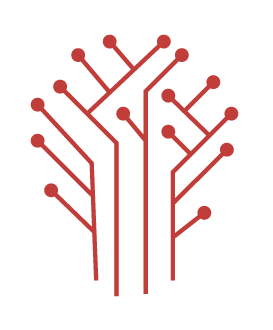Introduction: Technology as the New Lifestyle Partner
Technology is no longer just about gadgets or computers — it has become a part of daily life. From waking up to smart alarms to monitoring health with wearable devices, technology seamlessly supports our routines. In this modern era, innovation is not just about convenience; it’s about creating smarter systems that enhance productivity, improve efficiency, and make life more connected than ever before.
Every industry, from healthcare to retail, is being reshaped by digital transformation. Intelligent systems, automation, and AI are merging the physical and digital worlds, bringing new opportunities for businesses and consumers alike.
Smart Automation: The Engine Behind Modern Innovation
Automation has become the backbone of modern technology. Machines and software now handle repetitive tasks, allowing humans to focus on creativity and problem-solving. Whether it’s automated factory production, digital customer service, or intelligent home devices, automation saves time and resources.
In industries like logistics and manufacturing, automated robots work with precision and consistency. In the digital world, algorithms handle massive amounts of data, learning from patterns to make smart decisions. This shift has made technology faster, more efficient, and more reliable than ever before.
Internet of Things (IoT): Connecting Everything
The Internet of Things (IoT) connects everyday devices — from fitness trackers and smart thermostats to industrial sensors — through the internet. This connection allows data to flow between machines and users, enabling real-time control and analysis.
For instance, smartwatches monitor heart rate and activity levels, while connected fridges can alert you when you’re low on groceries. In cities, IoT helps manage traffic flow, street lighting, and waste collection efficiently. This interconnected ecosystem is redefining how we interact with the world, leading to more personalised and efficient experiences.
Technology in Fitness: Smarter Ways to Stay Healthy
Fitness has evolved beyond simple workouts. With the help of technology, individuals can now track calories, measure sleep quality, and monitor heart health with precision. Apps and wearables use AI and IoT to provide real-time feedback, helping people stay consistent and motivated.
Interestingly, automation has even entered gyms and health clubs. Innovative systems like vending machine fitness centers are becoming popular, offering protein drinks, supplements, and wellness products through smart vending units. These machines are not just convenient; they use real-time data to manage inventory, support contactless payments, and deliver a seamless customer experience. It’s a clear example of how technology is blending with fitness to create smarter wellness environments.
Artificial Intelligence: The Mind of Modern Machines
Artificial Intelligence (AI) has changed the way technology works. Machines can now learn, adapt, and make decisions without human input. AI powers everything from voice assistants like Alexa to recommendation systems on Netflix.
In business, AI analyses customer behaviour, predicts trends, and optimises operations. In healthcare, it helps doctors identify diseases early using medical imaging. AI’s ability to handle massive data sets and learn continuously has made it a core component of modern innovation. It’s not just about automation — it’s about creating intelligent systems that think and evolve.
Custom Solutions: Shaping the Future of Business
In today’s competitive market, businesses are looking for solutions that fit their specific needs. This is where customisation comes into play. Instead of relying on one-size-fits-all products, organisations invest in tailor-made systems designed to suit their operations and customers.
For instance, custom vending machine development allows businesses to design vending units that align with their brand and target audience. A vending machine in a corporate office may serve premium coffee, while one in a school might provide stationery and snacks. Custom software and hardware integration enable better user experiences, data tracking, and smart payment systems. This flexibility empowers companies to innovate while meeting unique consumer demands.
Sustainability Through Technology
Another important outcome of technological advancement is sustainability. Smart systems help reduce energy consumption, minimise waste, and support eco-friendly operations. Solar-powered devices, energy-efficient appliances, and smart grids are all examples of how technology is reducing environmental impact.
Even in retail and vending, digital inventory management and AI-driven logistics help prevent overproduction and spoilage. Technology not only drives growth but also promotes responsible innovation — a key factor in building a sustainable future.
Human and Machine Collaboration
The relationship between humans and machines has shifted from competition to collaboration. Technology amplifies human potential by automating routine tasks and providing valuable insights. Professionals now work alongside AI-powered tools to design better products, manage operations, and analyse large datasets efficiently.
This synergy ensures that technology complements creativity rather than replaces it. The goal is to create smarter environments where both human intelligence and machine precision thrive together.
The Future: Smarter, Simpler, and More Connected
As technology continues to evolve, the next phase will focus on personalisation and predictive systems. Smart environments will adapt to individual needs automatically — from lighting that adjusts to your mood to AI assistants that plan your schedule before you even ask.
In business, automation will enhance decision-making, IoT will strengthen interconnectivity, and AI will continue to refine efficiency. The ultimate goal is a world where technology works invisibly yet intelligently, improving every aspect of human life.
Conclusion: Building the Next Generation of Innovation
Technology has redefined what’s possible. It has transformed the way we work, live, and interact with our surroundings. From fitness to retail, automation and smart systems are creating seamless, data-driven experiences that were unimaginable a decade ago.
Whether it’s the rise of vending machine fitness centres that combine health and convenience or custom vending machine development that tailors solutions for modern businesses, technology continues to reshape industries. The journey toward a connected, intelligent, and sustainable future is already underway — and it’s only getting smarter with every innovation.



